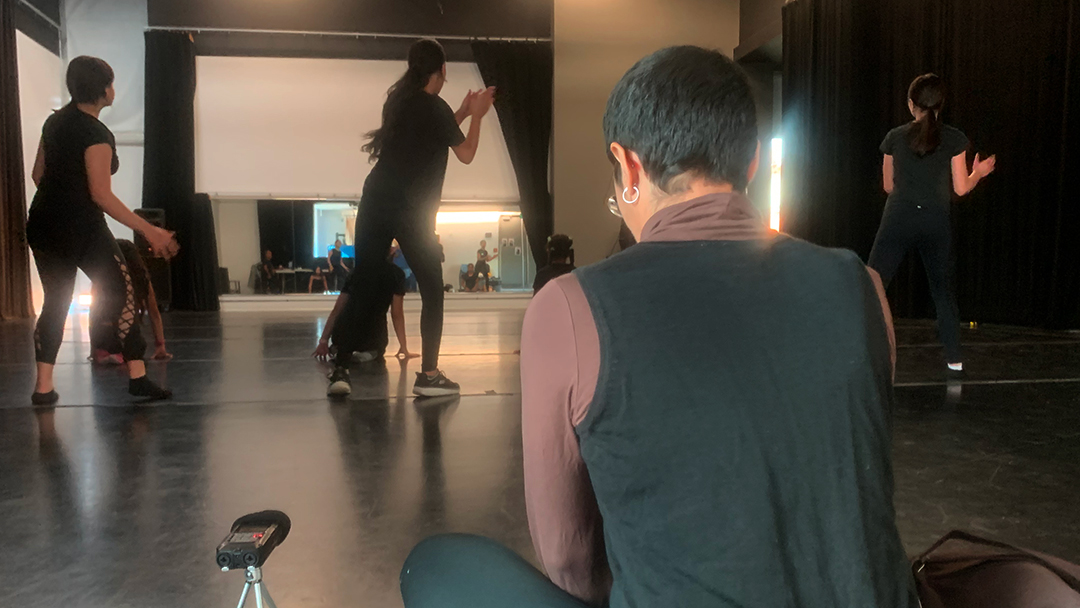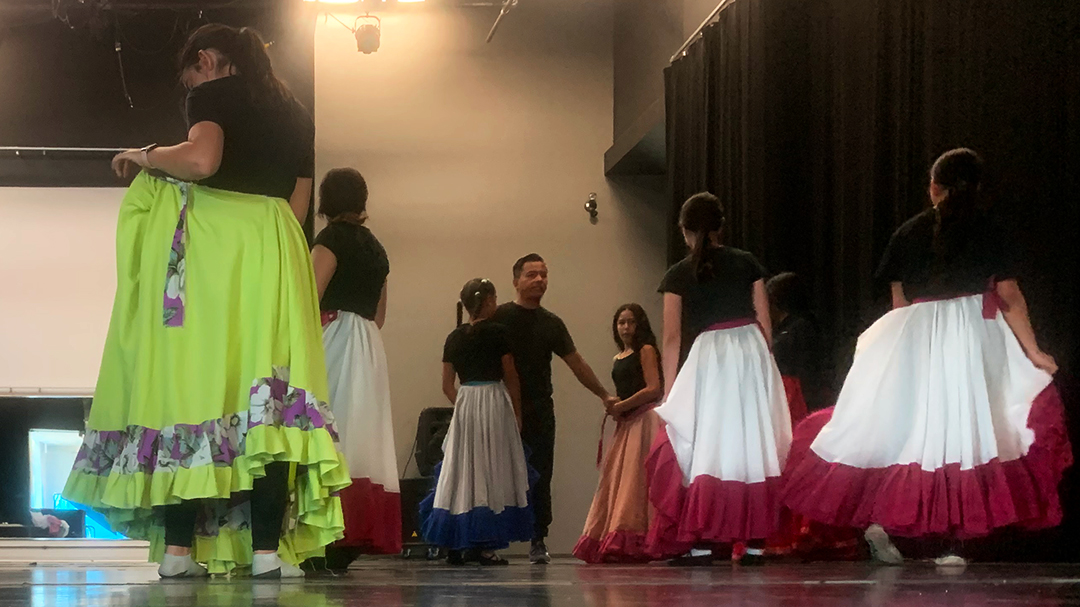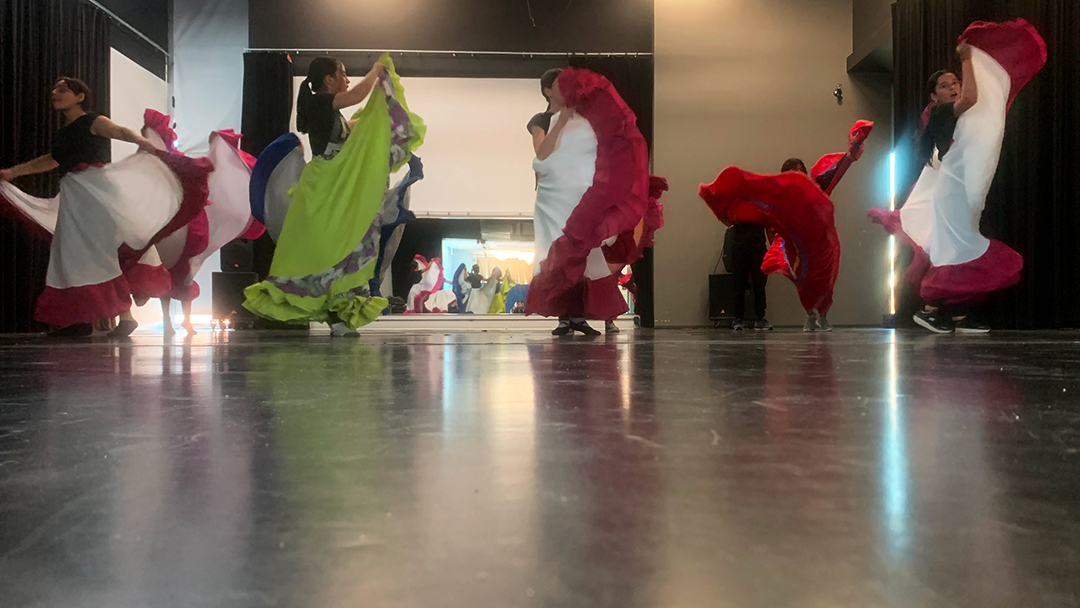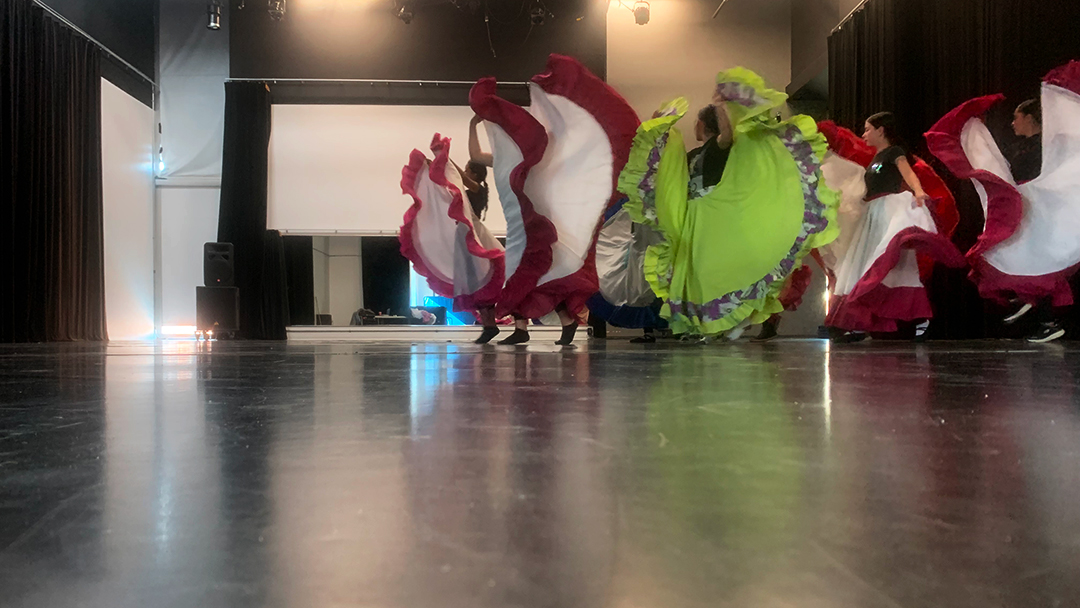


Camila Vásquez –
Observaciones y reflexiones de la curadora
Octubre 2024
Enternecedoras. ¿Qué otra palabra podría usar para describir esas niñas y adolescentes que aprenden en castellano danzas folclóricas de América Latina y el Caribe en Quebec? De países que tal vez conocen poco o a los que no han regresado desde hace mucho. Dónde quizás tienen parientes y amistades. Algunas habrán nacido en Quebec, algunas habrán migrado en el vientre materno, otras habrán llegado de la mano de su madre o su padre. Y están también esas que no han estado nunca en esos países que, sin embargo, forman parte de su historia de vida. Pero todas tienen en común que una vez por semana, pueden existir con sus pares en castellano, en una esfera social fuera del ambiente familiar, recibiendo un legado de sus raíces culturales a distancia.
El sonido de la música es estridente. Miguel Gutiérrez, que dirige la escuela Herencia Latina basada en Sherbrooke, les da instrucciones para mejorar las frases que repiten una y otra vez. Están en la etapa de aprendizaje, luego de la cual montarán dos espectáculos. Uno que presentarán en invierno para un público íntimo, y otro, en verano, con el que irán de gira por la región, participando en diferentes festivales y eventos.
“Todo lo que se empieza se termina”, les dice Miguel. Toma una chancla y, en vez de calzarse, se la pone en la mano. Luego se la quita y la sacude, inerte, lánguida, sin tonicidad. Vuelve a introducir la mano en ella para mostrarles cómo concluir un movimiento del brazo sin dejarlo interrumpido, sino que completándolo con fuerza y amplitud. La educación de Miguel es clásica en el mundo de la danza, en el que se exige rigor a las bailarinas, a veces a través del ejemplo y otras a través de la palabra. Una palabra que se impone y se da a entender. Ellas lo escuchan atentamente, diría incluso con cariño, manteniendo esa jovialidad propia de la infancia y la adolescencia.
Cuando Florencia y yo llegamos, durante el calentamiento, las chicas estaban elongando y conversando. Se notaba la complicidad, la cercanía de un grupo que se conoce y se reconoce. Florencia me comentó que a ella le hizo falta tener ese tipo de contexto sociocultural durante su infancia en Montreal. Y yo pienso en cómo me gustaría ofrecerle eso a mis hijos y a mi hija aquí, en la región de Estrie.
Curator’s observations & reflections
October 2024
Touching. What other word could I use to describe these children and teenagers learning Latin American and Caribbean folkloric dances in Spanish in Quebec? From countries they may know little about or have not been back to for a long time. Where they may have relatives and friends. Some will have been born in Quebec, some will have migrated in their mother’s womb, others will have arrived by the hand of their parents. And then there are those who have never been to these countries, which are nevertheless part of their life history. But they all have in common that once a week, they can exist with their peers in Spanish, in a social sphere outside the family environment, receiving a legacy of their cultural roots from a distance.
The sound of the music is raucous. Miguel Gutiérrez, who runs the Sherbrooke-based Herencia Latina school, directs them to improve the phrases they repeat over and over again. They are in the learning stage, after which they will put on two shows. One that they will present in winter for an intimate audience, and another, in summer, with which they will tour the region, participating in different festivals and events.
“What you start, you finish,” Miguel tells them. He picks up a flip-flop and, instead of putting on his foot, he puts it on his hand. Then he takes it off and shakes it, inert, languid, toneless. He puts his hand back in it to show them how to complete an arm movement without interrupting it, but rather completing it with strength and amplitude. Miguel’s education is classic in the world of dance, where rigor is demanded of the dancers, sometimes by example and sometimes by word. A word that imposes itself and makes itself understood. They listen to him attentively, I would even say with affection, maintaining that joviality of childhood and adolescence.
When Florencia and I arrived, during the warm-up, the girls were stretching and talking. You could feel the complicity, the closeness of a group that knows and recognizes each other. Florencia told me that she missed that kind of sociocultural context during her childhood in Montreal. And I think about how I would like to offer that to my children here in the Estrie region.


